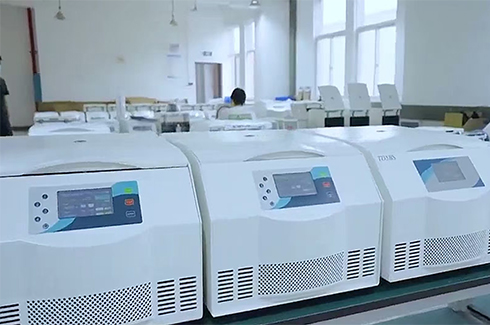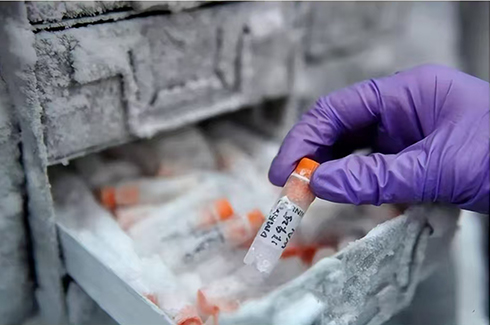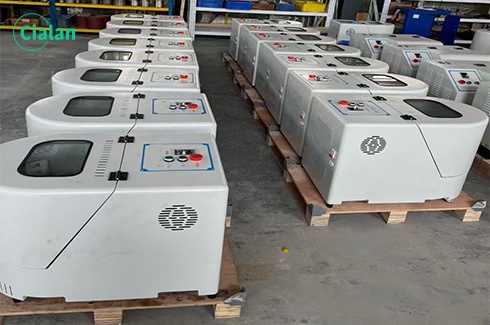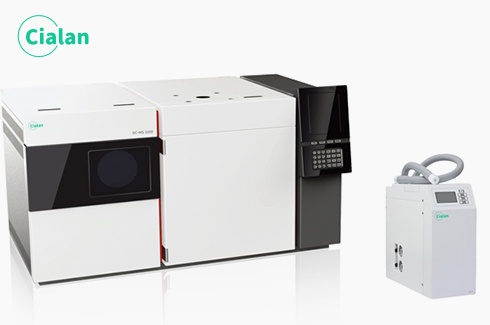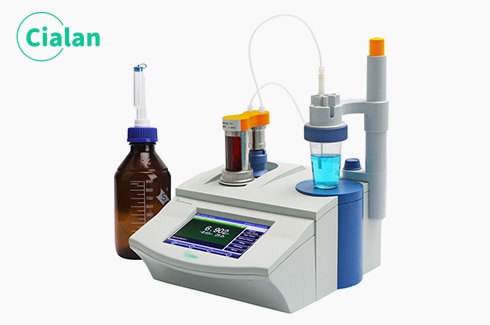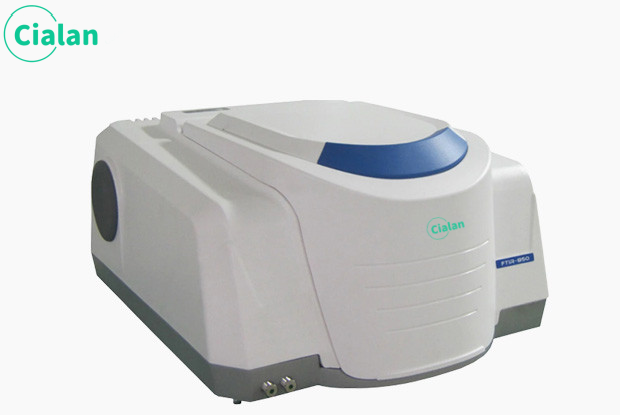Do you know a GC-MS (Working principles, structure, qualitative analysis, common problems, features)?
Structural composition of GC-MS.
GC-MS generally consists of the following five parts: chromatography (normal pressure), interface part, mass spectrometer analyzer (high vacuum), and computer data processing system.
.jpg)
1. GC gas chromatography part (composition and function).
(1) Carrier gas system: including gas source, gas purification, gas flow rate control, and measurement. To obtain pure and stable flow rate carrier gas.
(2) Sampling system: including injector and vaporization chamber. Injectors are divided into gas injectors and liquid injectors. The vaporization chamber is a device that instantly vaporizes liquid samples.
(3) Separation system: including chromatographic column, column temperature box, and temperature control device. According to the difference in distribution coefficient or adsorption coefficient between each component in the mobile phase and stationary phase, each component is separated in the chromatographic column.
(4) Temperature control system: controls the temperature of the gasification chamber, column box, and detector.
(5) Detection and recording system: including detectors, amplifiers, recorders, data processing devices, and workstations (chromatograms). Convert the concentration or mass of each component into an electrical signal and record it.
2. Interface part.
This is a hardware device that coordinates the output and input status of a joint instrument. Generally divided into direct interface (small-diameter capillary column) and open split interface (large-diameter capillary column), which are used to remove the carrier gas in the GC part and transfer components. There are two functions in GC-MS coupling:
(1) Pressure matching - the vacuum degree of the mass spectrometry ion source is 10-3Pa, while the outlet pressure of the GC column is as high as 105Pa. The function of the interface is to match the pressures of the two.
(2) Component concentration - there is a large amount of carrier gas in the gas flowing out from the GC column. The function of the interface is to exclude the carrier gas so that the analyte can be concentrated and enter the ion source.
3. MS mass spectrometry part.
The basic components of a mass spectrometer are an ion source, mass filter, and detector, which are placed in the vacuum main pipe. In the GC-MS coupling, each gaseous molecule separated by gas chromatography is bombarded by an ion source, electrolytically fragmented into molecular ions, and further fragmented into fragment ions. Under the combined action of an electric field and magnetic field, the samples are separated according to the m/z size and then reach the detector for detection, recording, and sorting to obtain the mass spectrum and achieve qualitative and quantitative analysis of the sample.
(1) Sampling system: The samples from the GC directly enter the MS analyzer.
(2) Ion source: The function of the ion source is to accept the sample and generate ions. Commonly used ionization methods include electron bombardment EI; and chemical ionization CI.
(3) Mass analyzer: Its function is to separate the ions generated in the ionization chamber according to their mass-to-charge ratio (m/z) for mass spectrometry detection. Common mass analyzers include quadrupole mass analyzers; sector mass analyzers; dual-focusing mass analyzers; and ion trap detectors.
(4) Detector: The function of the detector is to convert the ion beam into an electrical signal and amplify the signal. A commonly used detector is an electron multiplier.
4. GC-MS hyphenated technology(Working principle).
In combination, the gas chromatograph separates the components in the sample and plays the role of sample preparation; the interface sends the components flowing out of the gas chromatograph into the mass spectrometer for detection, playing the role of an adapter between the gas chromatograph and the mass spectrometer; the mass spectrometer The components introduced in sequence through the interface are analyzed and become the detector of the gas chromatograph; the computer system interactively controls the gas chromatograph, interface, and mass spectrometer for data collection and processing, and is the central control unit of GC-MS.
5. GC-MS technical characteristics.
Advantages:
1. In general applications, the chromatographic detector can be omitted: GC is used as a sampling system, and the sample to be tested is separated and directly introduced into the mass spectrometer for detection. This not only meets the requirements of mass spectrometry analysis for sample simplicity but also eliminates the cumbersome process of sample preparation and transfer. Not only does It avoid sample contamination, effectively controls the amount of mass spectrometer injection, reduces contamination of the mass spectrometer, and greatly improves the efficiency of mixture separation, and qualitative and quantitative analysis.
2. High qualitative ability: Using chromatographic retention time combined with the fingerprint mass spectrum of the compound to identify components is much better than relying solely on chromatographic retention time. The qualitative indicators of GC-MS include molecular ions, functional group ions, ion peak intensity ratios, isotope ion peaks, parent and daughter ion masses of ion reactions, and retention corresponding to total ion current chromatographic peaks, selected ion chromatographic peaks, and selected reaction chromatographic peaks. Time Window.
3. It can separate the chromatographic peaks that have not yet been separated: using extracted ions, selected ion monitoring, or selected reaction monitoring methods, and combined with certain data processing methods (such as AMDIS), can separate the chromatograms on the total ion chromatogram that have not yet been separated or are masked by chemical noise. peak.
4. It can improve the accuracy of quantitative analysis: Quantitative accuracy and qualitative capabilities can be improved by using isotope dilution and internal standard technology.
5. Improve the function of the instrument and realize the automation of analysis: The multi-function of the computer makes the structure of the instrument simpler, the operation more convenient, and the automation of the analysis work easier.
6. Insufficient:
The analysis objects are limited: the analysis objects are limited to samples that can be vaporized and ionized at around 300°C and below; compounds that are easily decomposed during the heating process and are too polar, such as organic acids, need to be esterified. GC-MS analysis can only be carried out after derivatization. If the sample cannot be vaporized or esterified, LC-MS or other methods must be used for analysis;
Test conditions are limited: GC-MS analysis samples should be organic solutions. Organic matter in solids or aqueous solutions generally cannot be measured. Extraction and separation must be performed to convert them into organic solutions, or thermal cracking or headspace sampling techniques must be used.
There are limitations in the application of mass spectrometry: A very important shortcoming of current mass spectrometry is that it cannot distinguish many isomers (especially positional isomers).
6. GC-MS sample testing requirements.
GC-MS analysis can be used for liquid, gaseous, and solid samples but is mainly limited to volatile and semi-volatile compounds.
Gases & Liquids: Samples are usually injected directly into the GC.
Solids: Solids, are analyzed by solvent extraction, degassing (desorption), or pyrolysis. Desorption experiments were performed at controlled temperatures between 40-300°C under a flow of helium gas, with analytes collected on a cryogenic trap during desorption.
Pyrolysis is an alternative sampling technique used to analyze materials that cannot be directly injected into GC-MS. By applying heat directly to the sample, molecules can be broken down in a reproducible way. Smaller molecules are then introduced into the GC and analyzed by GC-MS.
General requirements: The sample is required to be dissolved in organic solvents (such as acetone, n-hexane, etc.); the sample cannot contain water, salts, acids, and bases, etc.; it should be volatile and thermally stable, with a boiling point generally not exceeding 500°C. Compounds with a molecular weight less than 500; samples that need to be derivatized must be processed in advance; the sample content is at the ppb-ppm level, and the sample is generally not less than 0.5mL. Too small a sample volume requires a micro liner.
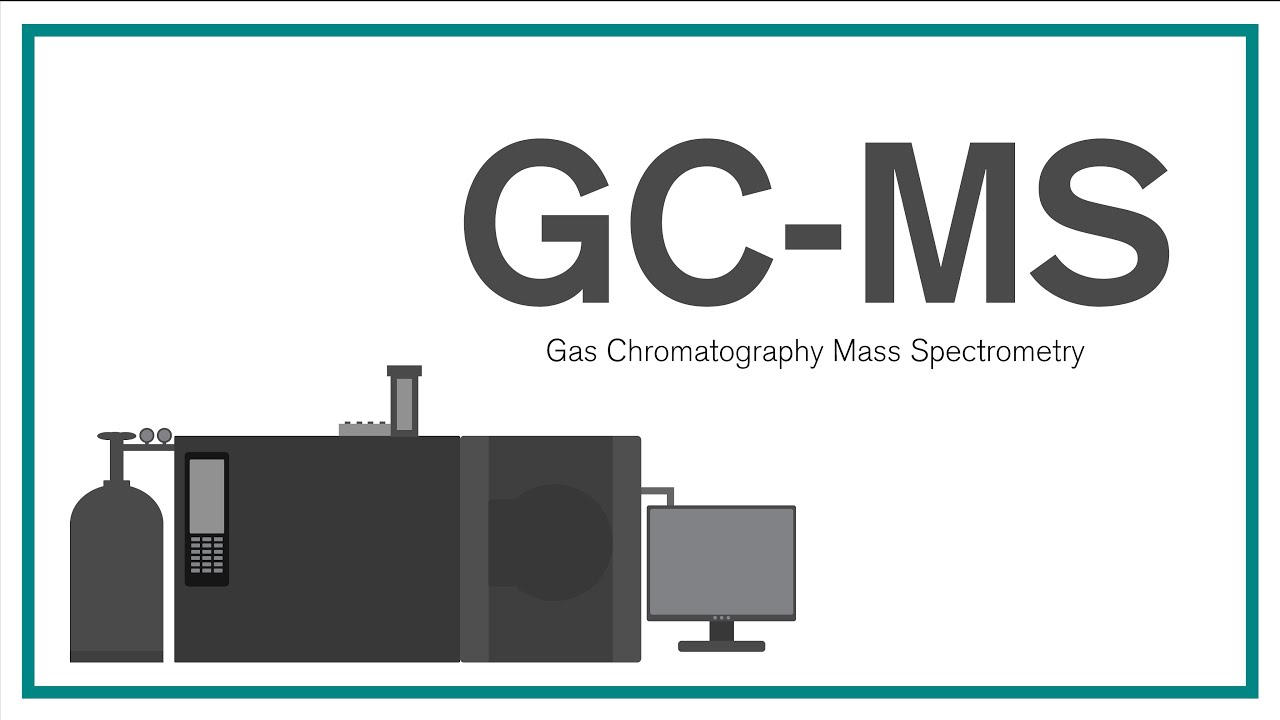
7. GC-MS result analysis.
Basics of qualitative analysis:
There are three commonly used quantitative methods for GC/MS coupled analysis, as well as chromatography, plus a GC-MS-specific method:
(1) Normalization method. The sum of the contents of all components in the sample is taken as 100, and the relative percentage content of each component is calculated, which is called the normalization method.
(2) External standard curve method. Use standard samples to prepare standard samples of different concentrations. Under the same operating conditions as the sample to be tested, measure the peak area or peak height of each compound in the standard sample to obtain the response factor.
(3) Internal standard method Internal standard standard curve method. The external standard method has certain shortcomings, which are limited to the fact that each analysis condition will produce errors from sample processing to testing. To overcome the inevitable measurement error, select an appropriate reference material (internal standard compound) and add it to the standard sample and the sample to be tested for measurement, and calculate the ratio of the response values of the compound to be tested and the internal standard compound (called the relative response factor), as The relative response factor and the amount of added internal standard compound are quantified, which is called the internal standard method.
(4) Isotope dilution method. The most ideal is to use the isotope label of the compound to be tested as an internal standard, which can ensure that the chemical properties, chromatographic behavior, and mass spectrometric behavior of the internal standard compound are consistent with the compound to be tested, thus eliminating errors caused by differences between compounds. Only GC/MS coupled technology can be used to use isotope markers as internal standards.
The advantages of the isotope dilution method are: that it can generally correct the matrix effect (the difference between the standard sample and the sample), the extraction efficiency is stable; the injection error is small, and the retention time has little effect with the change of the solvent gradient; the effect of instrument drift is small; isotope dilution in mass spectrometry The response between the agent and the sample analytes is stable, and the quantitative results are more accurate from the response ratio between the sample analytes and the internal standard. Disadvantages are: sample preparation is time-consuming; error results in pipetting and dilution are flawed.
8. GC-MS FAQs
(1) About 7 minutes after the mass spectrometer is turned on, the backing pump automatically turns off.
Within 7 minutes of starting the mass spectrometer, if the backing pump vacuum is not less than 300mTorr (diffusion pump system) or the molecular turbo pump speed is less than 80%, the mechanical pump will automatically shut down to avoid drawing a large amount of air into the vacuum chamber and causing contamination. The general reason is that the vacuum chamber is not closed properly.
(2) The nitrogen peak abundance is greater than 20%, resulting in substandard tuning evaluation, and the report shows that the system is leaking.
The problem can be seen from the abundance of 18, 28, and 32 relative to 69 in the tuning report. If 18 is high and 28 or 32 is low, it means that the vacuuming time is not enough because the water is more difficult to remove. If 18 is very low and 28 and 32 are very high, then there is a real air leak. The general reason is that the column is not installed properly, such as using the wrong graphite pad. If 18 and 32 are both low but 28 is high, it does not mean there is a gas leak. The reason may be that air has entered the gas purification tube or the gas quality is poor. I have also seen situations where it was as high as 40 and finally found out that the helium the user bought was argon.
(3) Tuning fails, prompting "no emission current".
If the user has just cleaned the ion source, the filament is not installed properly. Otherwise, the filament is burned out. The solution is to either change the filament or use another filament in manual tuning. Remember, when you find a problem with the mass spectrometer, don't forget to think about what you did before.
(4) Tuning can pass without pillars, but cannot pass with pillars installed.
Normal tuning without a column means that the mass spectrum is good and the problem lies with the column. There are two common reasons: first, the column is broken or poorly sealed, causing the vacuum of the mass spectrometer to drop; second, the column extends too long and blocks the electron beam.
(5) Tuning evaluation shows that the vacuum is very good, both 18 and 28 are very low, but the 502 abundance is less than 3%.
First, check the ion source temperature. If the ion source temperature is higher than 230 degrees, lower it to 230 degrees first. Because the higher the ion source temperature, the lower the abundance of 502. Then check the Repeller voltage. You can increase the maximum limit of the Repeller voltage appropriately, such as 35 volts. Higher voltage can result in a higher relative abundance of 502. If these measures fail, the ion source may need to be cleaned.
(6) The mass number is incorrect or the mass spectrum is strange and does not match the standard mass spectrum at all.
The mass spectrometer needs to be tuned, just like the weights need to be calibrated. The results of automatic tuning are stored in tune. u. If the name of the tuning file used in your method is not a tune. u, for example, mass. u, remember to save the tuning results to amass. u after tuning, otherwise, the tuning will be useless.
(7) Unable to connect.
Abnormal exit of the workstation will result in the inability to connect online. This is where you need to restart the computer, gas chromatograph, and mass spectrometer.
(8) The gas chromatograph has been started, but the mass spectrometer does not collect data.
There are two reasons: one is that the solvent delay has not ended, and the other is that the "Remote cable" is not installed properly.

GC-MS generally consists of the following five parts: chromatography (normal pressure), interface part, mass spectrometer analyzer (high vacuum), and computer data processing system.
.jpg)
1. GC gas chromatography part (composition and function).
(1) Carrier gas system: including gas source, gas purification, gas flow rate control, and measurement. To obtain pure and stable flow rate carrier gas.
(2) Sampling system: including injector and vaporization chamber. Injectors are divided into gas injectors and liquid injectors. The vaporization chamber is a device that instantly vaporizes liquid samples.
(3) Separation system: including chromatographic column, column temperature box, and temperature control device. According to the difference in distribution coefficient or adsorption coefficient between each component in the mobile phase and stationary phase, each component is separated in the chromatographic column.
(4) Temperature control system: controls the temperature of the gasification chamber, column box, and detector.
(5) Detection and recording system: including detectors, amplifiers, recorders, data processing devices, and workstations (chromatograms). Convert the concentration or mass of each component into an electrical signal and record it.
2. Interface part.
This is a hardware device that coordinates the output and input status of a joint instrument. Generally divided into direct interface (small-diameter capillary column) and open split interface (large-diameter capillary column), which are used to remove the carrier gas in the GC part and transfer components. There are two functions in GC-MS coupling:
(1) Pressure matching - the vacuum degree of the mass spectrometry ion source is 10-3Pa, while the outlet pressure of the GC column is as high as 105Pa. The function of the interface is to match the pressures of the two.
(2) Component concentration - there is a large amount of carrier gas in the gas flowing out from the GC column. The function of the interface is to exclude the carrier gas so that the analyte can be concentrated and enter the ion source.
3. MS mass spectrometry part.
The basic components of a mass spectrometer are an ion source, mass filter, and detector, which are placed in the vacuum main pipe. In the GC-MS coupling, each gaseous molecule separated by gas chromatography is bombarded by an ion source, electrolytically fragmented into molecular ions, and further fragmented into fragment ions. Under the combined action of an electric field and magnetic field, the samples are separated according to the m/z size and then reach the detector for detection, recording, and sorting to obtain the mass spectrum and achieve qualitative and quantitative analysis of the sample.
(1) Sampling system: The samples from the GC directly enter the MS analyzer.
(2) Ion source: The function of the ion source is to accept the sample and generate ions. Commonly used ionization methods include electron bombardment EI; and chemical ionization CI.
(3) Mass analyzer: Its function is to separate the ions generated in the ionization chamber according to their mass-to-charge ratio (m/z) for mass spectrometry detection. Common mass analyzers include quadrupole mass analyzers; sector mass analyzers; dual-focusing mass analyzers; and ion trap detectors.
(4) Detector: The function of the detector is to convert the ion beam into an electrical signal and amplify the signal. A commonly used detector is an electron multiplier.
4. GC-MS hyphenated technology(Working principle).
In combination, the gas chromatograph separates the components in the sample and plays the role of sample preparation; the interface sends the components flowing out of the gas chromatograph into the mass spectrometer for detection, playing the role of an adapter between the gas chromatograph and the mass spectrometer; the mass spectrometer The components introduced in sequence through the interface are analyzed and become the detector of the gas chromatograph; the computer system interactively controls the gas chromatograph, interface, and mass spectrometer for data collection and processing, and is the central control unit of GC-MS.
5. GC-MS technical characteristics.
Advantages:
1. In general applications, the chromatographic detector can be omitted: GC is used as a sampling system, and the sample to be tested is separated and directly introduced into the mass spectrometer for detection. This not only meets the requirements of mass spectrometry analysis for sample simplicity but also eliminates the cumbersome process of sample preparation and transfer. Not only does It avoid sample contamination, effectively controls the amount of mass spectrometer injection, reduces contamination of the mass spectrometer, and greatly improves the efficiency of mixture separation, and qualitative and quantitative analysis.
2. High qualitative ability: Using chromatographic retention time combined with the fingerprint mass spectrum of the compound to identify components is much better than relying solely on chromatographic retention time. The qualitative indicators of GC-MS include molecular ions, functional group ions, ion peak intensity ratios, isotope ion peaks, parent and daughter ion masses of ion reactions, and retention corresponding to total ion current chromatographic peaks, selected ion chromatographic peaks, and selected reaction chromatographic peaks. Time Window.
3. It can separate the chromatographic peaks that have not yet been separated: using extracted ions, selected ion monitoring, or selected reaction monitoring methods, and combined with certain data processing methods (such as AMDIS), can separate the chromatograms on the total ion chromatogram that have not yet been separated or are masked by chemical noise. peak.
4. It can improve the accuracy of quantitative analysis: Quantitative accuracy and qualitative capabilities can be improved by using isotope dilution and internal standard technology.
5. Improve the function of the instrument and realize the automation of analysis: The multi-function of the computer makes the structure of the instrument simpler, the operation more convenient, and the automation of the analysis work easier.
6. Insufficient:
The analysis objects are limited: the analysis objects are limited to samples that can be vaporized and ionized at around 300°C and below; compounds that are easily decomposed during the heating process and are too polar, such as organic acids, need to be esterified. GC-MS analysis can only be carried out after derivatization. If the sample cannot be vaporized or esterified, LC-MS or other methods must be used for analysis;
Test conditions are limited: GC-MS analysis samples should be organic solutions. Organic matter in solids or aqueous solutions generally cannot be measured. Extraction and separation must be performed to convert them into organic solutions, or thermal cracking or headspace sampling techniques must be used.
There are limitations in the application of mass spectrometry: A very important shortcoming of current mass spectrometry is that it cannot distinguish many isomers (especially positional isomers).
6. GC-MS sample testing requirements.
GC-MS analysis can be used for liquid, gaseous, and solid samples but is mainly limited to volatile and semi-volatile compounds.
Gases & Liquids: Samples are usually injected directly into the GC.
Solids: Solids, are analyzed by solvent extraction, degassing (desorption), or pyrolysis. Desorption experiments were performed at controlled temperatures between 40-300°C under a flow of helium gas, with analytes collected on a cryogenic trap during desorption.
Pyrolysis is an alternative sampling technique used to analyze materials that cannot be directly injected into GC-MS. By applying heat directly to the sample, molecules can be broken down in a reproducible way. Smaller molecules are then introduced into the GC and analyzed by GC-MS.
General requirements: The sample is required to be dissolved in organic solvents (such as acetone, n-hexane, etc.); the sample cannot contain water, salts, acids, and bases, etc.; it should be volatile and thermally stable, with a boiling point generally not exceeding 500°C. Compounds with a molecular weight less than 500; samples that need to be derivatized must be processed in advance; the sample content is at the ppb-ppm level, and the sample is generally not less than 0.5mL. Too small a sample volume requires a micro liner.

7. GC-MS result analysis.
Basics of qualitative analysis:
There are three commonly used quantitative methods for GC/MS coupled analysis, as well as chromatography, plus a GC-MS-specific method:
(1) Normalization method. The sum of the contents of all components in the sample is taken as 100, and the relative percentage content of each component is calculated, which is called the normalization method.
(2) External standard curve method. Use standard samples to prepare standard samples of different concentrations. Under the same operating conditions as the sample to be tested, measure the peak area or peak height of each compound in the standard sample to obtain the response factor.
(3) Internal standard method Internal standard standard curve method. The external standard method has certain shortcomings, which are limited to the fact that each analysis condition will produce errors from sample processing to testing. To overcome the inevitable measurement error, select an appropriate reference material (internal standard compound) and add it to the standard sample and the sample to be tested for measurement, and calculate the ratio of the response values of the compound to be tested and the internal standard compound (called the relative response factor), as The relative response factor and the amount of added internal standard compound are quantified, which is called the internal standard method.
(4) Isotope dilution method. The most ideal is to use the isotope label of the compound to be tested as an internal standard, which can ensure that the chemical properties, chromatographic behavior, and mass spectrometric behavior of the internal standard compound are consistent with the compound to be tested, thus eliminating errors caused by differences between compounds. Only GC/MS coupled technology can be used to use isotope markers as internal standards.
The advantages of the isotope dilution method are: that it can generally correct the matrix effect (the difference between the standard sample and the sample), the extraction efficiency is stable; the injection error is small, and the retention time has little effect with the change of the solvent gradient; the effect of instrument drift is small; isotope dilution in mass spectrometry The response between the agent and the sample analytes is stable, and the quantitative results are more accurate from the response ratio between the sample analytes and the internal standard. Disadvantages are: sample preparation is time-consuming; error results in pipetting and dilution are flawed.
8. GC-MS FAQs
(1) About 7 minutes after the mass spectrometer is turned on, the backing pump automatically turns off.
Within 7 minutes of starting the mass spectrometer, if the backing pump vacuum is not less than 300mTorr (diffusion pump system) or the molecular turbo pump speed is less than 80%, the mechanical pump will automatically shut down to avoid drawing a large amount of air into the vacuum chamber and causing contamination. The general reason is that the vacuum chamber is not closed properly.
(2) The nitrogen peak abundance is greater than 20%, resulting in substandard tuning evaluation, and the report shows that the system is leaking.
The problem can be seen from the abundance of 18, 28, and 32 relative to 69 in the tuning report. If 18 is high and 28 or 32 is low, it means that the vacuuming time is not enough because the water is more difficult to remove. If 18 is very low and 28 and 32 are very high, then there is a real air leak. The general reason is that the column is not installed properly, such as using the wrong graphite pad. If 18 and 32 are both low but 28 is high, it does not mean there is a gas leak. The reason may be that air has entered the gas purification tube or the gas quality is poor. I have also seen situations where it was as high as 40 and finally found out that the helium the user bought was argon.
(3) Tuning fails, prompting "no emission current".
If the user has just cleaned the ion source, the filament is not installed properly. Otherwise, the filament is burned out. The solution is to either change the filament or use another filament in manual tuning. Remember, when you find a problem with the mass spectrometer, don't forget to think about what you did before.
(4) Tuning can pass without pillars, but cannot pass with pillars installed.
Normal tuning without a column means that the mass spectrum is good and the problem lies with the column. There are two common reasons: first, the column is broken or poorly sealed, causing the vacuum of the mass spectrometer to drop; second, the column extends too long and blocks the electron beam.
(5) Tuning evaluation shows that the vacuum is very good, both 18 and 28 are very low, but the 502 abundance is less than 3%.
First, check the ion source temperature. If the ion source temperature is higher than 230 degrees, lower it to 230 degrees first. Because the higher the ion source temperature, the lower the abundance of 502. Then check the Repeller voltage. You can increase the maximum limit of the Repeller voltage appropriately, such as 35 volts. Higher voltage can result in a higher relative abundance of 502. If these measures fail, the ion source may need to be cleaned.
(6) The mass number is incorrect or the mass spectrum is strange and does not match the standard mass spectrum at all.
The mass spectrometer needs to be tuned, just like the weights need to be calibrated. The results of automatic tuning are stored in tune. u. If the name of the tuning file used in your method is not a tune. u, for example, mass. u, remember to save the tuning results to amass. u after tuning, otherwise, the tuning will be useless.
(7) Unable to connect.
Abnormal exit of the workstation will result in the inability to connect online. This is where you need to restart the computer, gas chromatograph, and mass spectrometer.
(8) The gas chromatograph has been started, but the mass spectrometer does not collect data.
There are two reasons: one is that the solvent delay has not ended, and the other is that the "Remote cable" is not installed properly.



